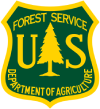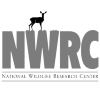Humane Wildlife Control in Baton Rouge, LA
The Humane Wildlife Control Society recommends non-invasive solutions to resolve human-wildlife conflicts. This includes:
Determining if the issue needs to be addressed at all
Opting for preventative measures first
Opting for wildlife exclusion as opposed to trapping
If trapping is the only way to solve the problem do so humanely
The Humane Wildlife Control Society screens candidates prior to recommendation. Our process requires any company we recommend to meet the following criteria:
Is properly licensed in Louisiana for wildlife control
Carries appropriate business licenses and insurance
Complies with all Louisiana laws and regulations for wildlife control
Adheres to the humane principles listed above.
In Baton Rouge, Louisiana we recommend Humane Wildlife Removal Baton Rouge for professional wildlife control services. This is a private company that charges for their services.
Contact Information:
Wildlife Removal Baton Rouge
225-289-4143
If you have any wildlife issues that can be handled by the state government agency for free, the Louisiana Wildlife Commission can help.
State Contact Information: (225) 765-2800
The State Department of Agriculture may also be able to address your wildlife problem for no charge.
USDA Contact Information: (225) 922-1234
Responsible Wildlife Handling in Baton Rouge, Louisiana
Introduction
Baton Rouge, Louisiana’s unique geographical position at the intersection of multiple ecosystems creates exceptional biodiversity and frequent human-wildlife interactions. Located along the Mississippi River and surrounded by wetlands, forests, and urban development, the city faces distinct wildlife management challenges that require informed and ethical approaches. This essay examines the principles, practices, and significance of responsible wildlife handling in Baton Rouge, providing essential information for residents, wildlife professionals, and policymakers.
Baton Rouge’s Diverse Wildlife Landscape
Native Species and Habitats
Baton Rouge hosts a remarkable variety of wildlife due to its proximity to diverse habitats:
The Mississippi River and its associated wetlands support alligators, numerous waterfowl species, and aquatic mammals like beavers and nutria. The surrounding bottomland hardwood forests harbor white-tailed deer, wild turkeys, numerous songbird species, and small mammals. Urban and suburban environments throughout the city attract adaptable species including raccoons, opossums, armadillos, and a variety of birds.
Human-Wildlife Interface Challenges
Several factors intensify wildlife interactions in Baton Rouge:
Continuous development has fragmented natural habitats, forcing wildlife into closer contact with human populations. The subtropical climate enables year-round wildlife activity, unlike northern regions where winter dormancy reduces certain wildlife conflicts. Invasive species, including feral hogs and Cuban tree frogs, create additional management complications. Seasonal flooding can temporarily displace wildlife into residential areas, creating unexpected encounters.
Ethical Principles of Wildlife Handling
Legal Framework
Wildlife management in Baton Rouge operates under a comprehensive regulatory structure:
The Louisiana Department of Wildlife and Fisheries (LDWF) serves as the primary regulatory agency, establishing seasons, methods, and restrictions for wildlife handling. Federal protections through the Migratory Bird Treaty Act and Endangered Species Act supersede local regulations for certain species. Municipal ordinances address specific urban wildlife issues, including feeding prohibitions and nuisance control standards.
Ethical Considerations
Responsible wildlife handling extends beyond legal compliance to encompass:
The principle of minimum disturbance, which prioritizes prevention over intervention. Recognition of wildlife’s ecological value, even when species create conflicts. Commitment to humane methods that minimize stress and suffering. Acknowledgment of public safety priorities when dangerous wildlife situations arise.
Professional Wildlife Handling Practices
Qualifications and Training
Effective wildlife management requires specialized expertise:
Licensed wildlife control operators in Louisiana must demonstrate knowledge of species identification, behavior, and appropriate handling techniques. Professional certification programs like the National Wildlife Control Operators Association provide standards for ethical practice. Continuing education requirements ensure practitioners remain current on evolving best practices.
Assessment and Planning
Professional wildlife handling begins with thorough evaluation:
Species identification determines legal requirements and appropriate handling methods. Behavior assessment distinguishes between normal wildlife activity and problematic situations. Site evaluation identifies attractants and access points requiring modification. Safety planning accounts for risks to both wildlife and humans during handling processes.
Intervention Techniques
When intervention becomes necessary, several approaches prioritize both effectiveness and animal welfare:
Exclusion methods prevent wildlife access while allowing safe exit from structures. Wildlife-proof barriers installed at common entry points create lasting prevention. Humane trapping employs appropriate cage sizes, regular monitoring, and prompt relocation or release. Chemical repellents serve as temporary deterrents while more permanent solutions are implemented.
Special Considerations for Baton Rouge
Climate-Related Factors
Baton Rouge’s subtropical climate creates specific wildlife handling challenges:
High temperatures necessitate frequent monitoring of trapped animals to prevent heat stress. Extended breeding seasons for many species require year-round awareness of potential offspring presence. Hurricane preparation must include wildlife management components, as displaced animals often seek shelter in structures during severe weather events.
Iconic Local Species
Several species require specialized handling approaches in Baton Rouge:
Alligators
Despite their fearsome reputation, alligators rarely pose threats unless habituated to humans through feeding. The LDWF maintains a dedicated Nuisance Alligator Program for situations requiring removal. Only authorized agents may legally capture or relocate alligators in Louisiana.
Venomous Snakes
Baton Rouge is home to several venomous snake species, including cottonmouths and copperheads. Professional removal is strongly recommended for venomous snake encounters. Educational initiatives help residents distinguish between venomous and beneficial non-venomous species.
Bats
Colonial bat species, particularly the Mexican free-tailed bat, often establish roosts in Baton Rouge structures. Exclusion must account for seasonal factors, avoiding separation of mothers from dependent young. Bat conservation is particularly important given their ecological role in controlling insect populations.
Community Engagement and Education
Public Awareness Initiatives
Effective wildlife management depends on informed residents:
The Bluebonnet Swamp Nature Center serves as an educational hub for wildlife awareness in Baton Rouge. LDWF outreach programs provide resources for homeowners experiencing wildlife conflicts. Local schools incorporate Louisiana wildlife education into science curricula. Citizen science projects engage residents in wildlife monitoring while building appreciation for local biodiversity.
Reporting Systems
Structured reporting mechanisms connect residents with appropriate resources:
The LDWF maintains wildlife hotlines for reporting injured animals or potential violations. Municipal animal control addresses urban wildlife concerns within city limits. Public health departments handle potential disease transmission concerns, particularly regarding rabies vector species.
Preventative Approaches for Residents
Property Modifications
Proactive measures significantly reduce wildlife conflicts:
Regular maintenance identifies and addresses potential entry points before animals establish residence. Chimney caps, roof vent covers, and foundation seals prevent wildlife access to structures. Proper fencing designed for target species can effectively protect gardens and yards. Tree management prevents canopy access to roofs and structures.
Resource Management
Controlling attractants dramatically decreases wildlife problems:
Secure garbage storage using wildlife-resistant containers prevents access to food waste. Pet food should remain indoors, particularly overnight when many wildlife species are most active. Bird feeding practices should incorporate catch trays and appropriate placement to avoid attracting non-target species. Garden planning can incorporate native plants less attractive to problematic wildlife.
Emerging Approaches and Future Directions
Technology Integration
New technologies continue improving wildlife handling:
Remote monitoring systems allow wildlife professionals to track animal activity patterns. Non-invasive deterrents including motion-activated devices provide humane prevention. Environmental DNA sampling helps identify species presence without direct observation. Geographic Information Systems track wildlife movement patterns to inform management decisions.
Research Priorities
Ongoing research addresses key knowledge gaps:
Urban wildlife corridor studies examine how animals navigate fragmented habitats. Human dimensions research explores public attitudes toward wildlife to improve education initiatives. Disease surveillance monitors wildlife populations for emerging public health concerns. Climate change impact assessments predict shifting wildlife patterns and inform adaptive management.
Conclusion
Responsible wildlife handling in Baton Rouge requires balancing ecological preservation with human needs through knowledge, ethical practice, and community engagement. By embracing prevention, humane intervention, and continued learning, residents and professionals can address wildlife challenges while preserving the biodiversity that enriches Louisiana’s capital city. As urban development continues, the principles outlined in this essay provide a framework for coexistence that respects both human priorities and wildlife welfare, ensuring that future generations can appreciate Baton Rouge’s natural heritage.







